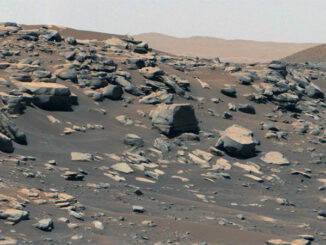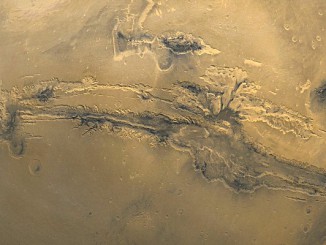
Raging megafloods, likely triggered by the heat of a meteoritic impact, roared across Gale Crater near the equator of Mars some 4 billion years ago, creating gigantic sedimentary ripples visible today that are similar to features formed by melting ice on Earth 2 million years ago.
“We identified megafloods for the first time using detailed sedimentological data observed by the rover Curiosity,” said Alberto G. Fairén, a visiting astrobiologist at Cornell University and co-author of a paper in the journal Nature. “Deposits left behind by megafloods had not been previously identified with orbiter data.”
Giant wave-shaped features seen in sedimentary layers deposited in Gale Crater, known as antidunes or “megaripples,” tower 30 feet high and are spaced about 450 feet apart. They most likely were formed by flooding in the wake of a large impact that released carbon dioxide and methane from frozen reservoirs.
Condensation led to clouds of water vapour, creating possibly planet-wide rainfall. Water entering Gale Crater joined water flowing down Mount Sharp in the center of the crater, producing gigantic flash floods that deposited the observed ridges.
Data from the Curiosity rover earlier confirmed that Gale Crater once harboured longer-lived lakes and streams, raising the possibility of microbial life.
“Early Mars was an extremely active planet from a geological point of view,” Fairén said. “The planet had the conditions needed to support the presence of liquid water on the surface – and on Earth, where there’s water, there’s life.
“So early Mars was a habitable planet,” he said. “Was it inhabited? That’s a question that the next rover Perseverance … will help to answer.”
Perseverance, launched 30 July from Cape Canaveral, is expected to land in Jezero Crater on Mars on 18 February 2021.



